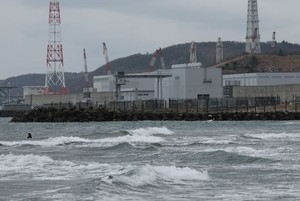By YUKA HONDA/ Staff Writer
May 6, 2024 at 07:00 JST
 The No. 2 main office building of the Tokyo metropolitan government in Shinjuku Ward (Asahi Shimbun file photo)
The No. 2 main office building of the Tokyo metropolitan government in Shinjuku Ward (Asahi Shimbun file photo)
More than 100 non-Japanese students were rejected under the specialized quota system for entry at Tokyo metropolitan government-run high schools because of the overwhelming number of applicants.
Those left out must take the ordinary entrance exams for these schools. But mastering five subjects in Japanese is a tough task for students from abroad.
The rejected number is higher than usual, and calls are growing in the metropolitan assembly to expand the framework quickly to promote accessibility to more high schools in the capital.
The special quota in Tokyo targets foreign nationals who have lived in Japan for three years or less as well as students who have attended international schools in the country.
Tokyo’s board of education started the quota system in fiscal 1989, aiming to provide learning opportunities for people who have just arrived in Japan from abroad.
The quota was first used at Kokusai High School in Meguro Ward, which is known for sending students to prestigious colleges and universities.
The number of schools covered under the framework has since risen to eight, and a total of 160 students are now accepted in full-time courses.
Under the mechanism, applicants are selected based on the results of essays and interviews conducted in English or Japanese.
In the admission exam this spring, 73 foreign-born children applied for the 25 slots at Kokusai High School. This meant one in 2.92 applicants was successful.
For the remaining total quota of 135 at the other seven schools, 236 individuals took the dedicated test.
The competitive ratio was one space for every 1.75 applicants, the most over the last five years.
Only one in two applicants passed the exam at five of the seven senior highs.
Seven schools, unlike Kokusai High School, do not disclose how many applicants actually show up at test sites, so there could be some no-shows.
But an education board representative said most of the applicants take the exam.
ALLOCATION TOO SMALL
As an increasing number of foreign residents have moved to Tokyo following the end of the COVID-19 pandemic, more students from outside Japan need spots at metropolitan government-run senior highs.
Non-Japanese children accounted for 1,220, or 0.9 percent, of all students in fiscal 2014. The figure reached 1,474, or 1.2 percent, in fiscal 2023.
Schools saw fewer foreign students during the novel coronavirus crisis, but the figure is rising again lately.
The special quota for non-Japanese students appears too small for the trend, given that the 160-allotment represented just 0.4 percent of all 40,635 full-time students who were expected to enter Tokyo-run high schools this spring.
The number of schools compatible with the quota differs significantly from place to place. Only one academy, Fuchu Nishi High School, exists in the Tama region of western Tokyo.
Students rejected under the mechanism can take an ordinary admission test, and special treatment is provided to foreign children in this type of exam, too.
Those in Japan for three years or less can use dictionaries in the test. Hiragana phonetic transcriptions accompany kanji characters out of consideration to applicants who have lived in Japan for six years or less.
Taking this conventional exam, many children from overseas enter part-time high schools.
Although part-time students accounted for just 7.8 percent of all children studying at Tokyo-run senior highs in fiscal 2023, the ratio reached 27.4 percent among non-Japanese students.
Hitoshi Tsunoda, a teacher at the part-time course at Machida High School, who has long taught students from abroad at Tokyo-managed institutes, however, said the modified version of the standard test is still too tough.
“There are high hurdles to overcome before students whose mother tongues are not Japanese take the five-subject exam,” he said.
Expansion of the specialized quota was urged during a general inquiry at a Tokyo assembly session on Feb. 29.
Kayoko Hama, chair of Tokyo’s education board, said in response: “More students are expected to need Japanese education from now. We will consider the proper scale of the program in hopes of securing educational opportunities for them.”
Hama emphasized that Tokyo “has been making efforts, such as deploying extra teaching staff and actively using outside personnel,” to help non-Japanese students after they enter schools.
According to the education board, one additional teacher is deployed to each institute covered by the special quota system.
Tokyo’s multiculturalism school support center refers Japanese language instructors and interpreters to schools at their request, too.
In addition, an outside-school Japanese language course was introduced this fiscal year for new students of Tokyo-run high schools.
The education board developed guidelines on Japanese language instructions in March, urging all schools and teachers to become fully aware of how to teach and support non-Japanese students.
Tsunoda said after-admission support and special quota expansion should be enhanced in an integrated manner.
“Schools falling outside the scope of the quota system are struggling to help non-Japanese students based on their respective judgments under the current circumstance,” he said.
A possible countermeasure is introducing quotas for schools with many foreign students.




















A peek through the music industry’s curtain at the producers who harnessed social media to help their idols go global.
A series based on diplomatic documents declassified by Japan’s Foreign Ministry
Here is a collection of first-hand accounts by “hibakusha” atomic bomb survivors.
Cooking experts, chefs and others involved in the field of food introduce their special recipes intertwined with their paths in life.
A series about Japanese-Americans and their memories of World War II